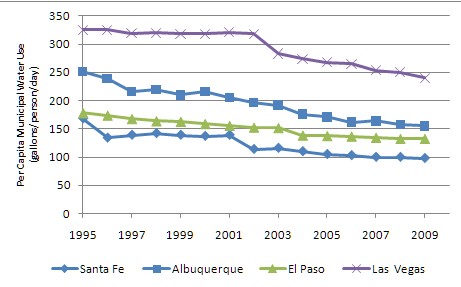April 19, 2015 - The City of Santa Fe's Sustainable Santa Fe Commission recently announced that the Water Efficiency Rating Score's (WERS) Development Team won a Sustainable Santa Fe Award. The Commission bestowed the honor in the "Water Adaptation" category for "developing an accurate and flexible tool to drive water conservation in measurable ways".
"We are truly humbled that the City of Santa Fe has recognized the WERS development team," said Mike Collignon, Executive Director of the Green Builder® Coalition. "It's a testament to the extensive work everyone has conducted to bring a practical water efficiency program to areas looking for assistance."
The WERS program is a performance-based, interactive water conservation tool for new and existing homes. It uses a scoring scale of zero to 100, with zero being the most desirable. The program analyzes indoor water usage, as well as rainwater and greywater usage. The City of Santa Fe has passed a resolution calling for its addition to their green building code. The New Mexico legislature and Governor recently added a water efficiency requirement to their sustainable building tax credit and will look to the WERS program for assistance. Numerous communities and green building programs are looking to utilize this innovative program.
Read the full story: WERS Award to Founding Development Team




Recent Comments